This gouache by Jacques Laplace (1890–1955) depicts a rural landscape dominated by a large, expressive central tree with twisted, angular black branches that extend dramatically across the composition. This sculptural vegetal figure immediately captures attention and organizes the scene. Surrounding the tree, the landscape opens onto green meadows where a few cows graze, while in the background, one can make out rural buildings typical of the Dauphiné region.
Laplace’s palette favors greens, browns, and grays, with touches of light that enliven the scene and suggest a shifting atmosphere—perhaps that of a windy or stormy afternoon. The sky, rendered in broad, fluid washes, heightens the dramatic character of the landscape. The vigorous black outlines emphasize the raw energy of nature, conveying a vision both powerful and poetic.
Laplace’s style here aligns with post-impressionism and fauvism, movements that deeply influenced his artistic path. His work reveals a simplification of forms, energetic lines, and a focus on atmosphere over descriptive realism.
A great admirer of Cézanne, Laplace favored strong compositional structure and light, while granting expressive freedom to color and gesture. This gouache illustrates his ability to capture the soul of a place—balancing modern pictorial language with a deep attachment to the land—and perfectly exemplifies his role as a visual poet of the Lyon and Dauphiné regions.







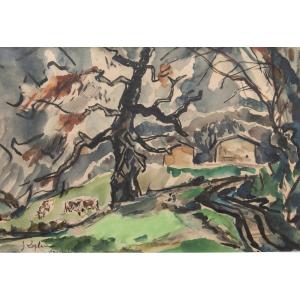






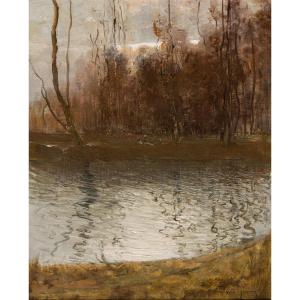






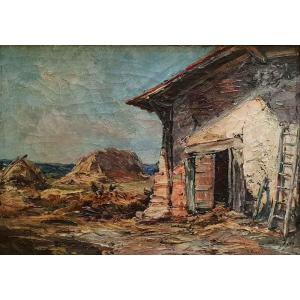

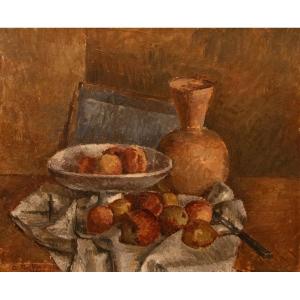

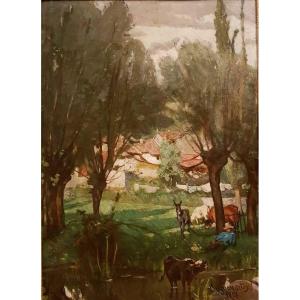
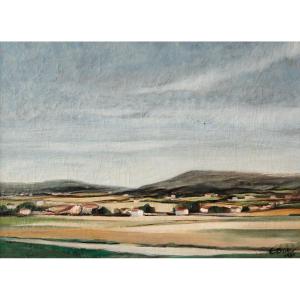




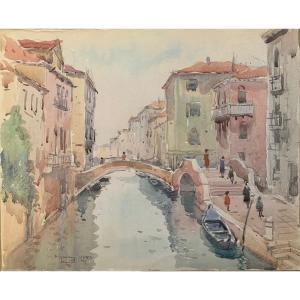




 Le Magazine de PROANTIC
Le Magazine de PROANTIC TRÉSORS Magazine
TRÉSORS Magazine Rivista Artiquariato
Rivista Artiquariato